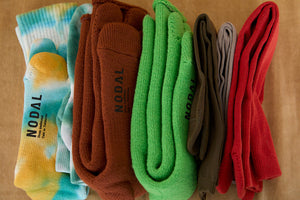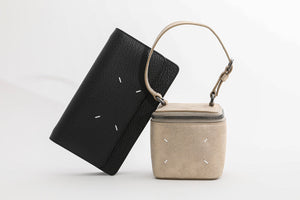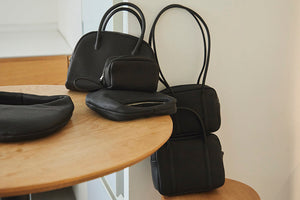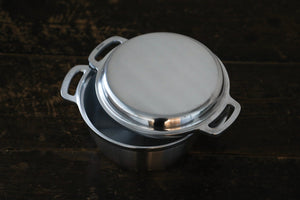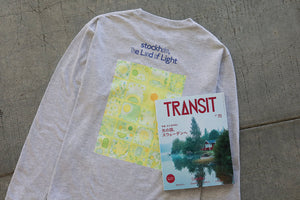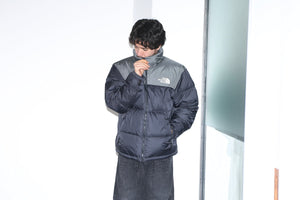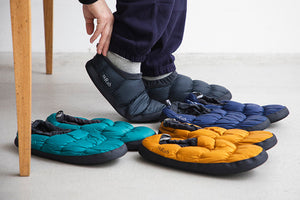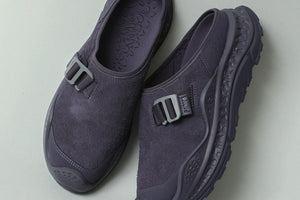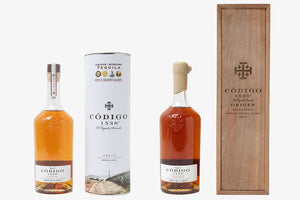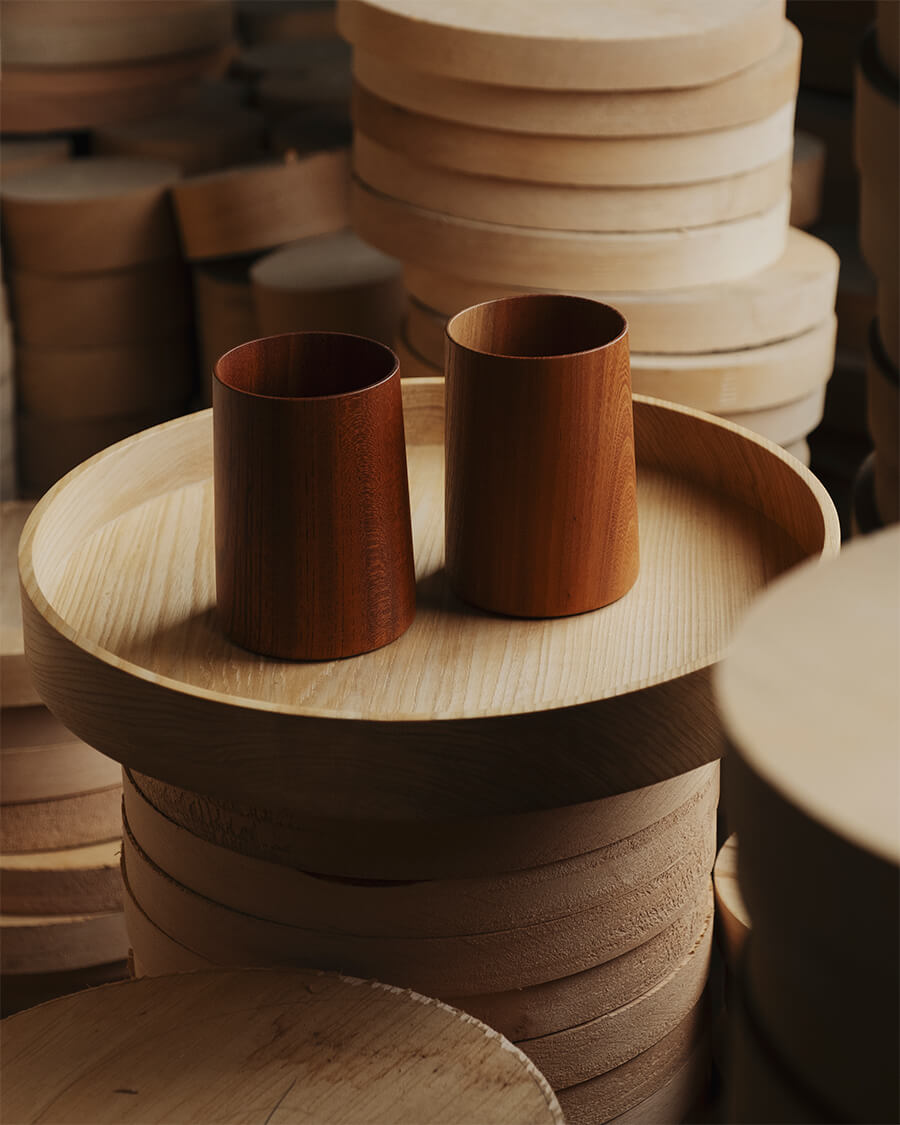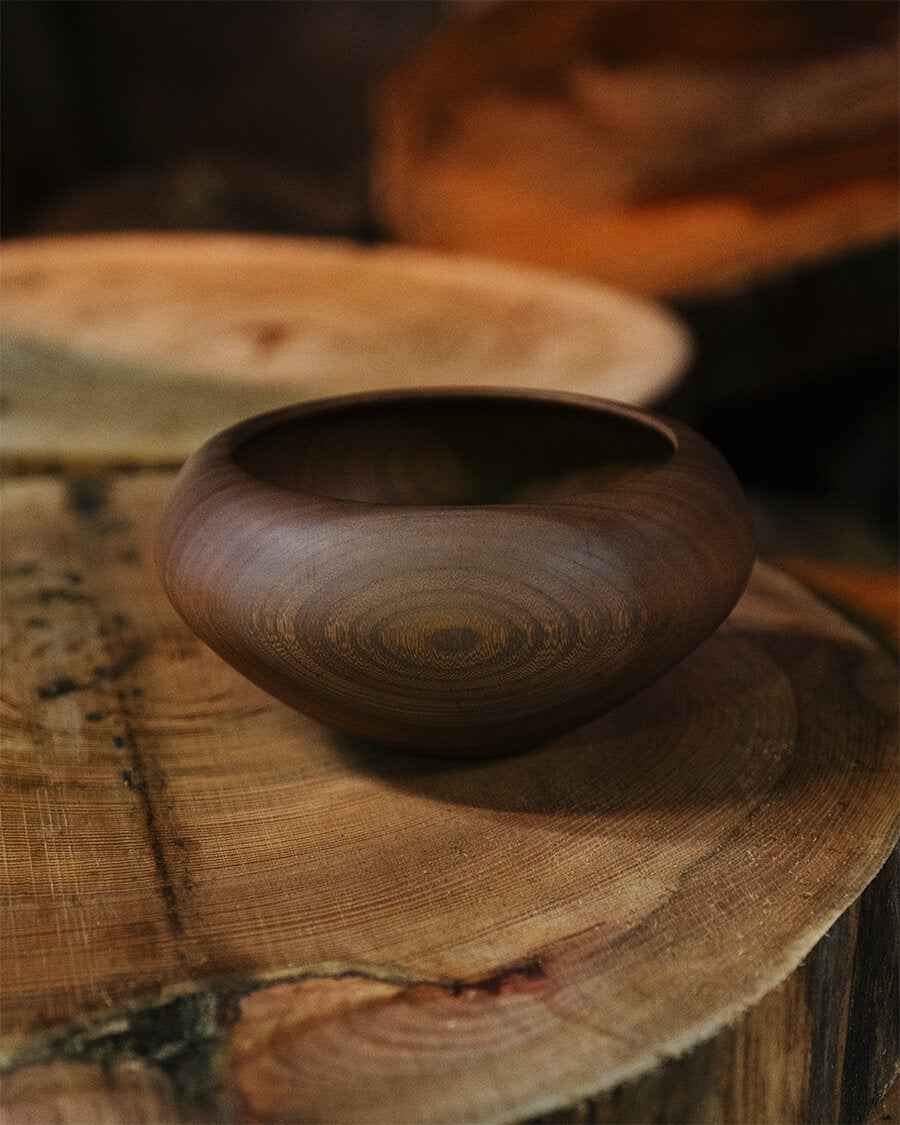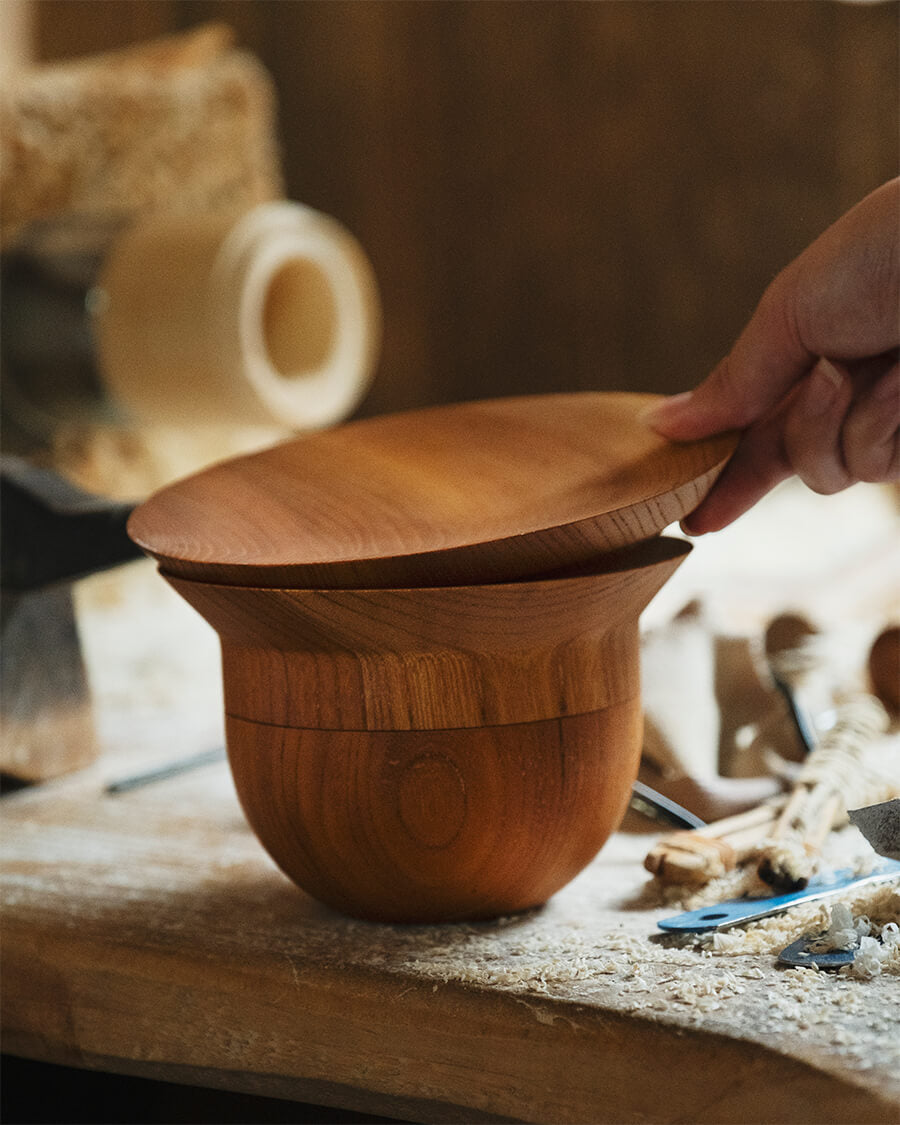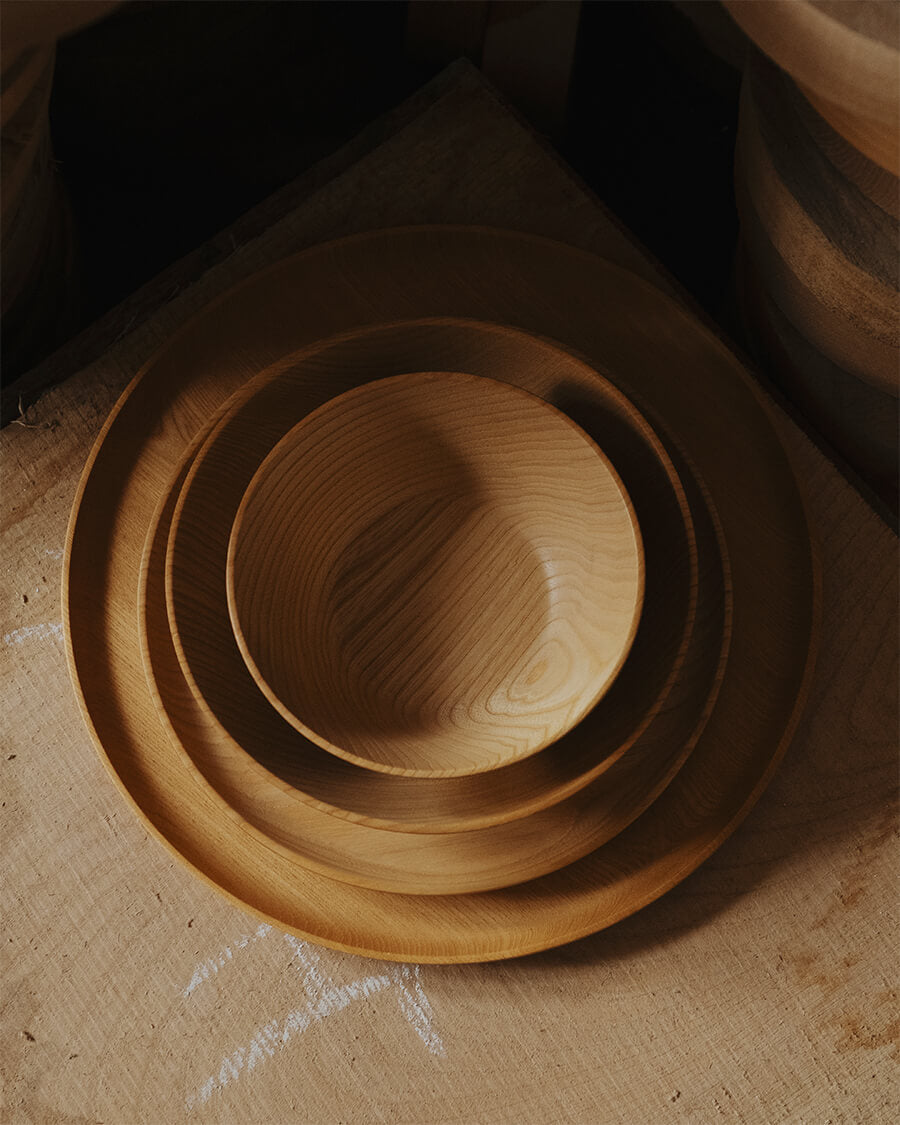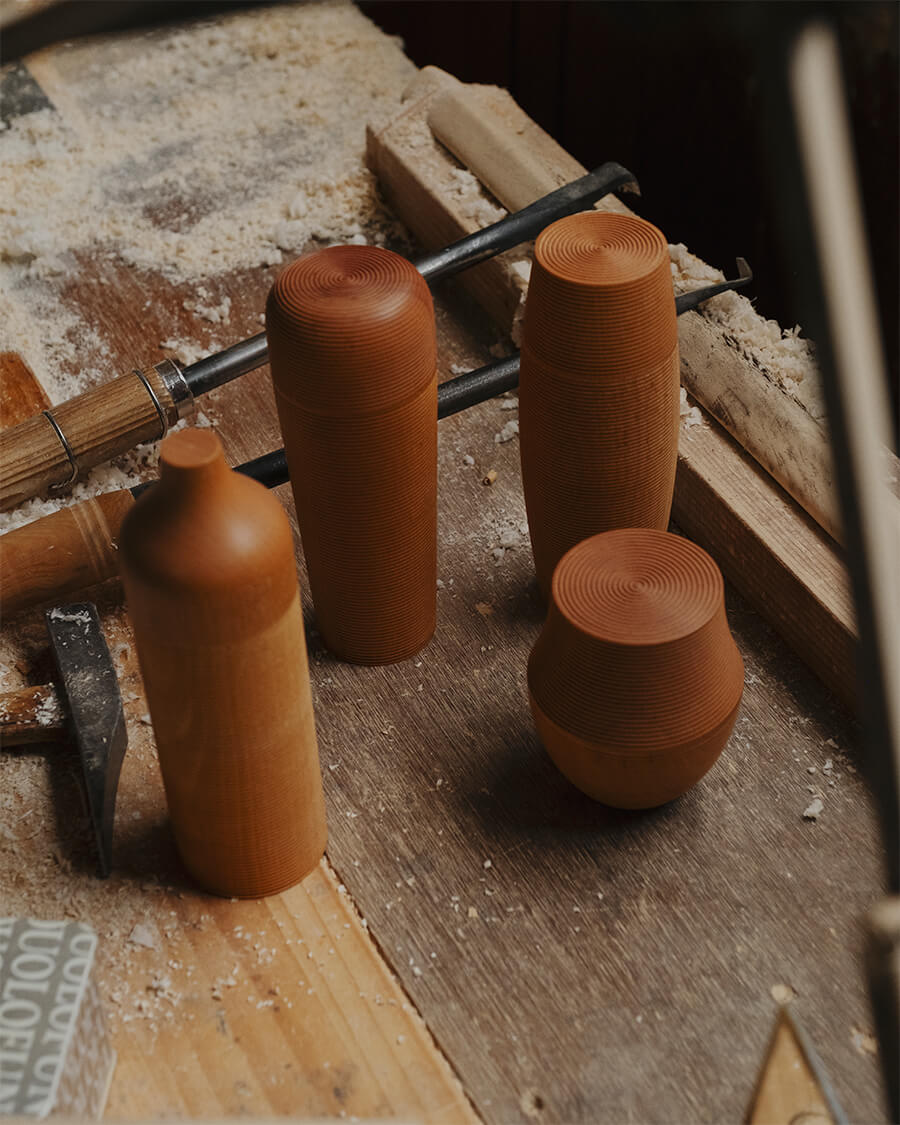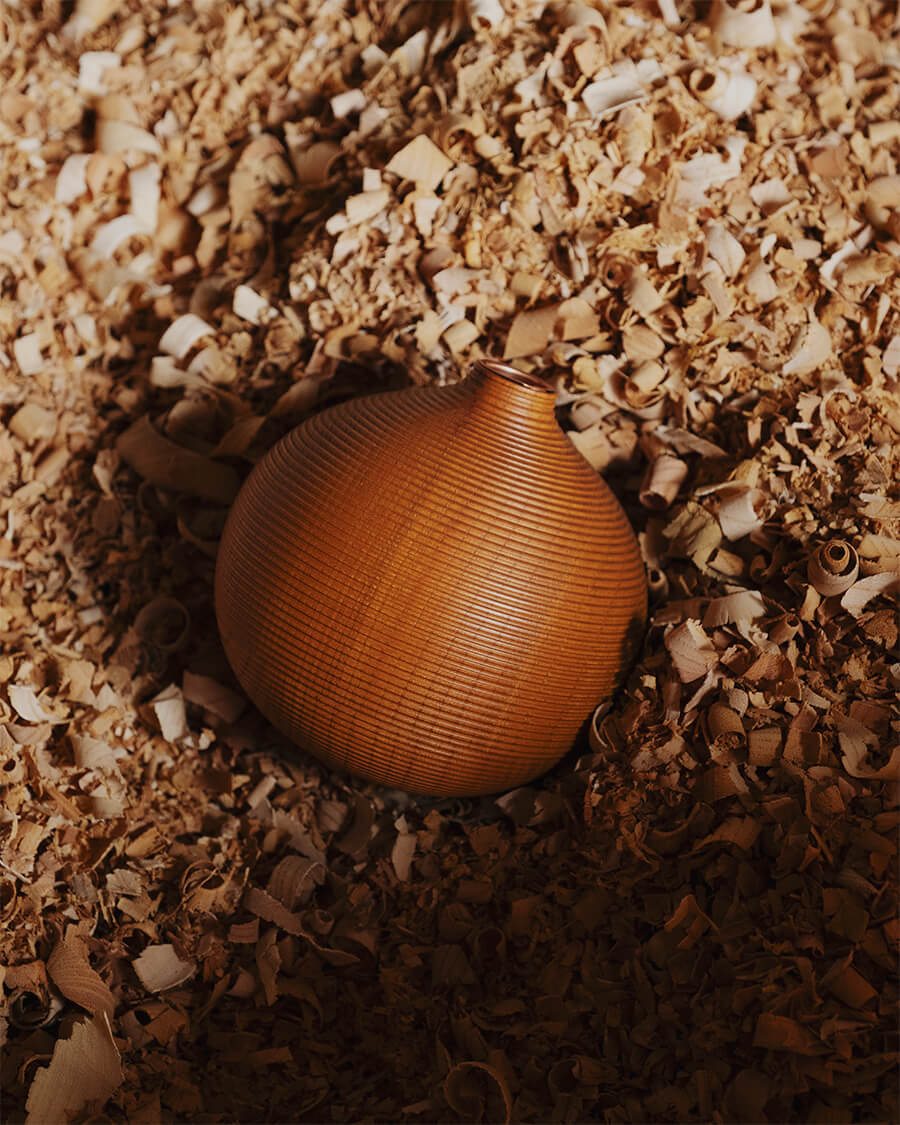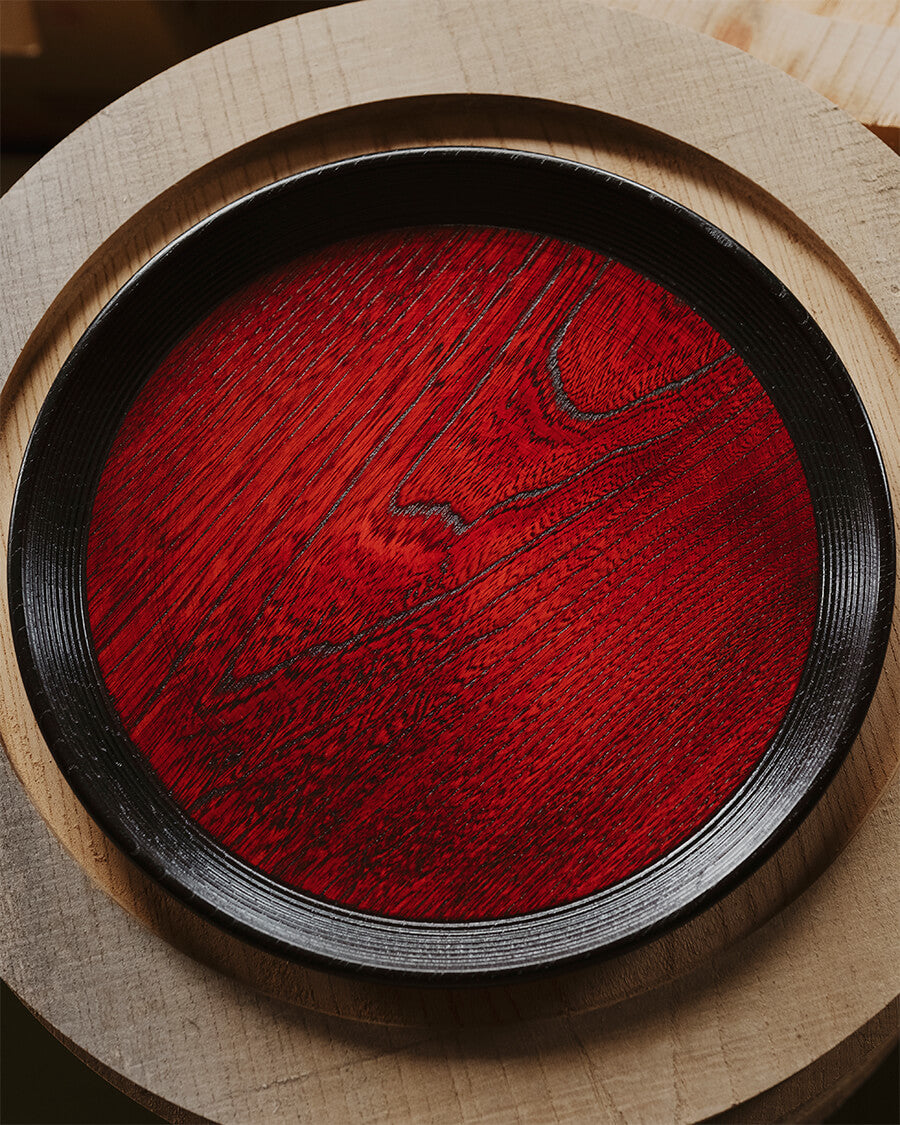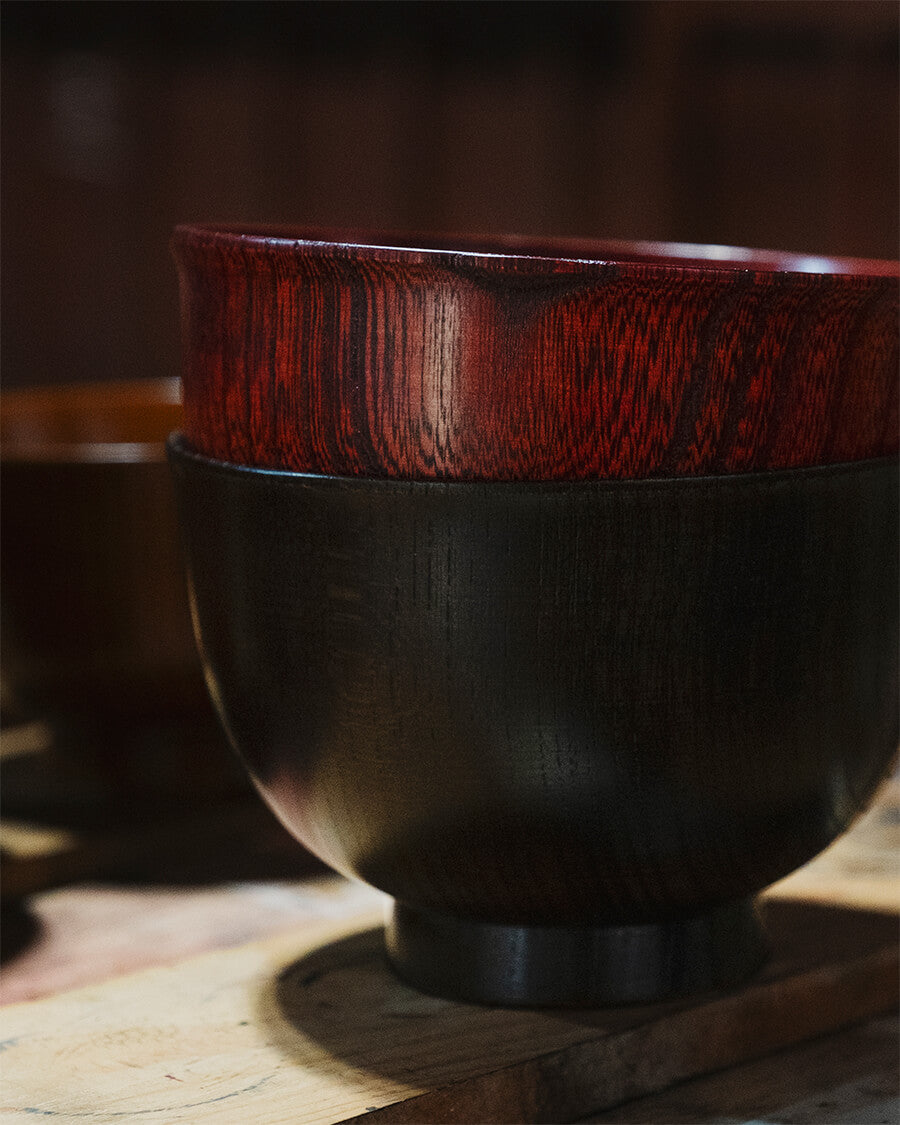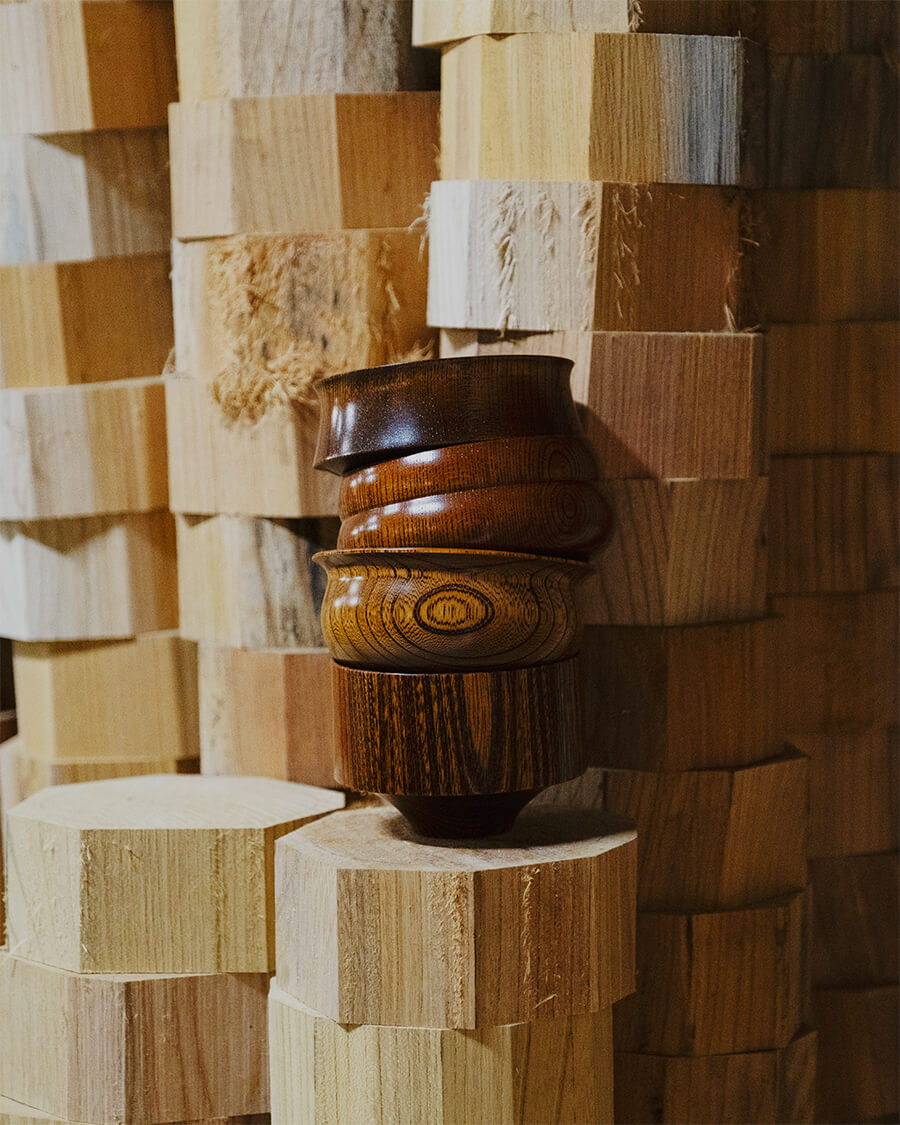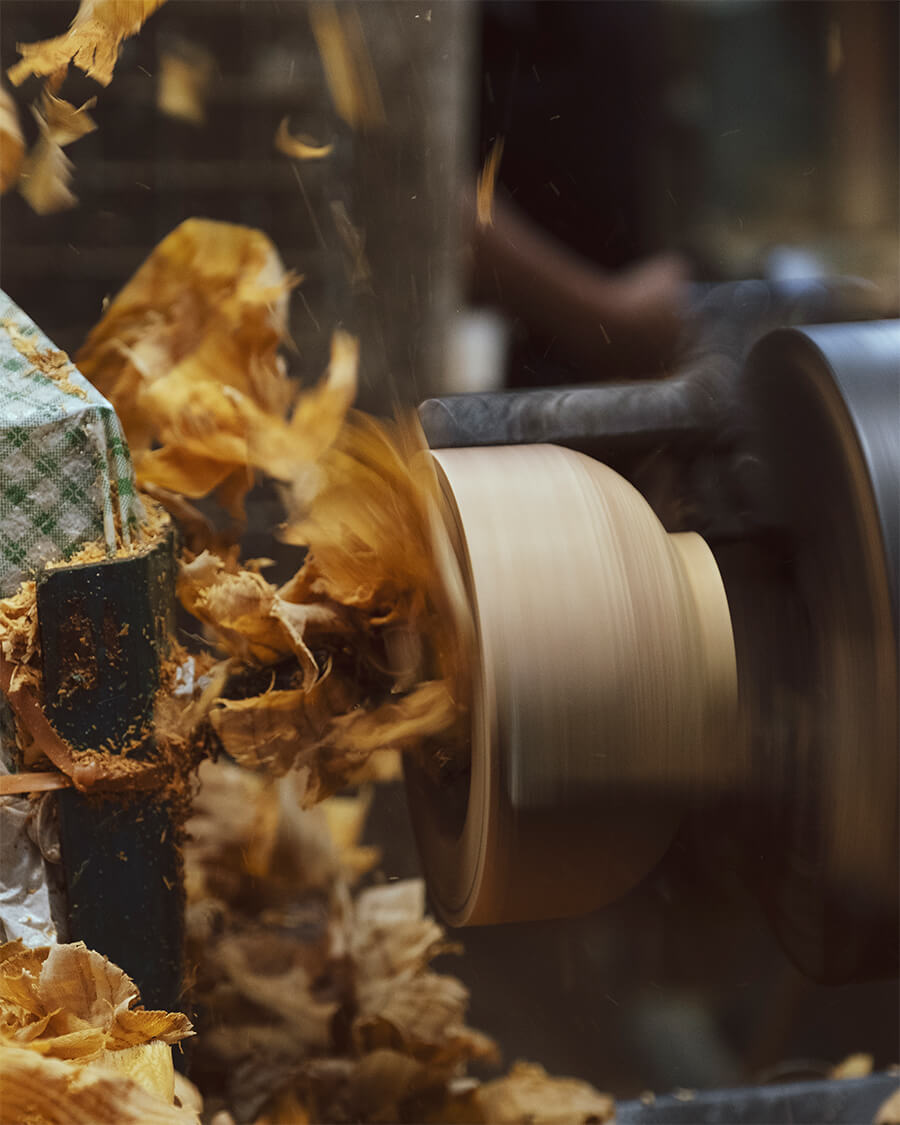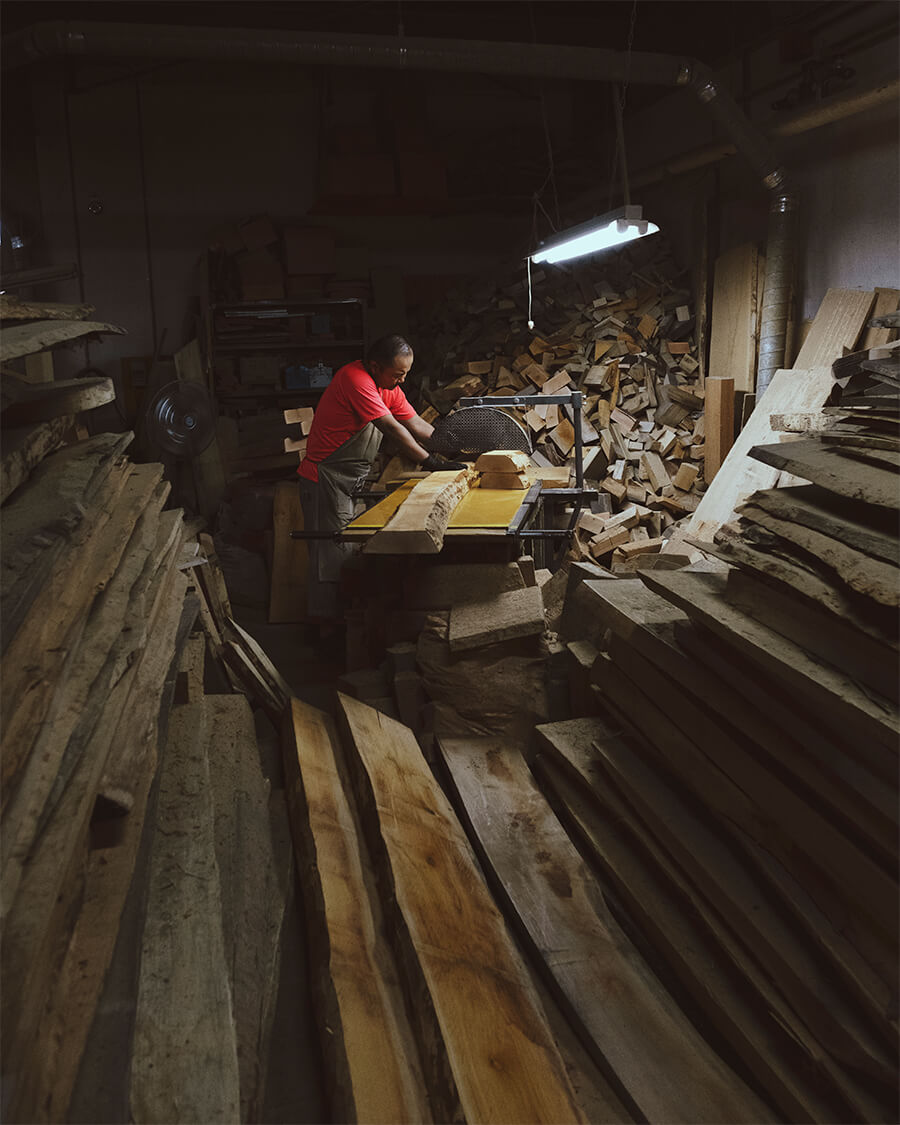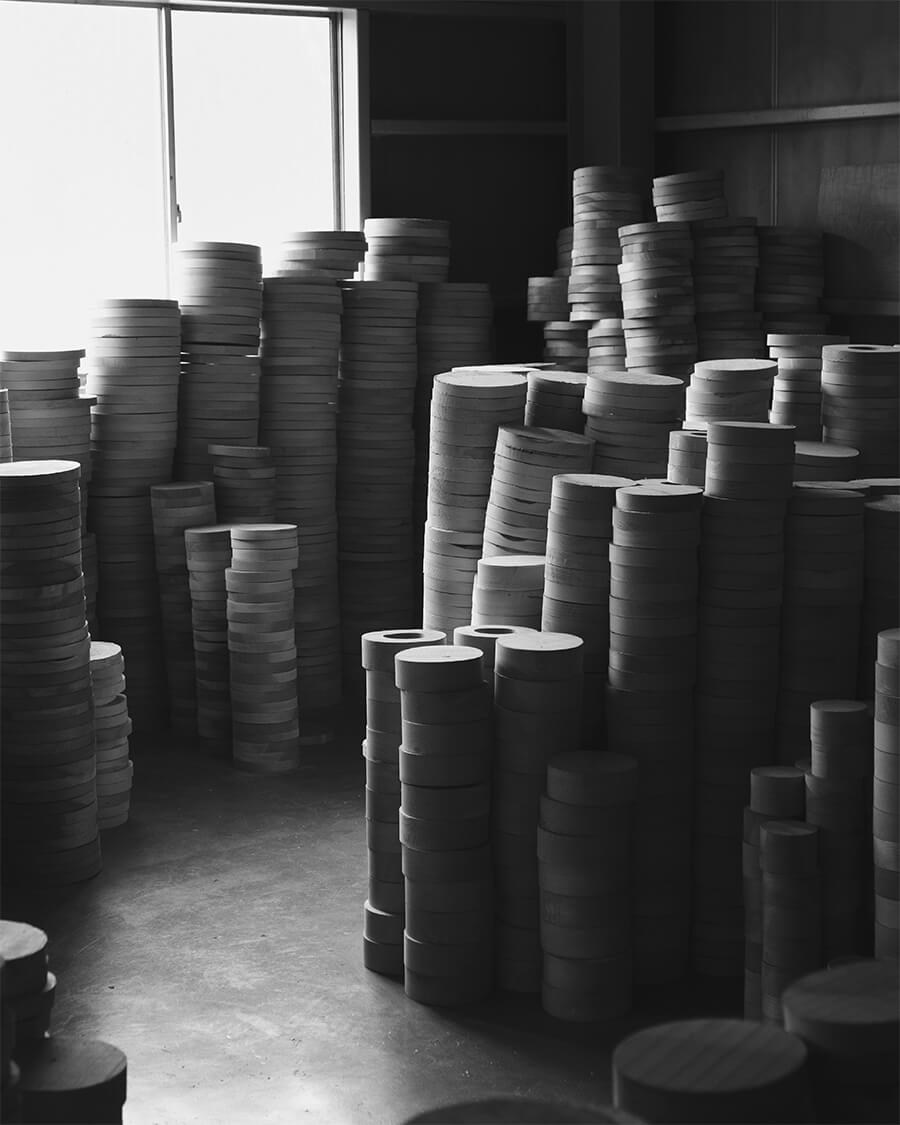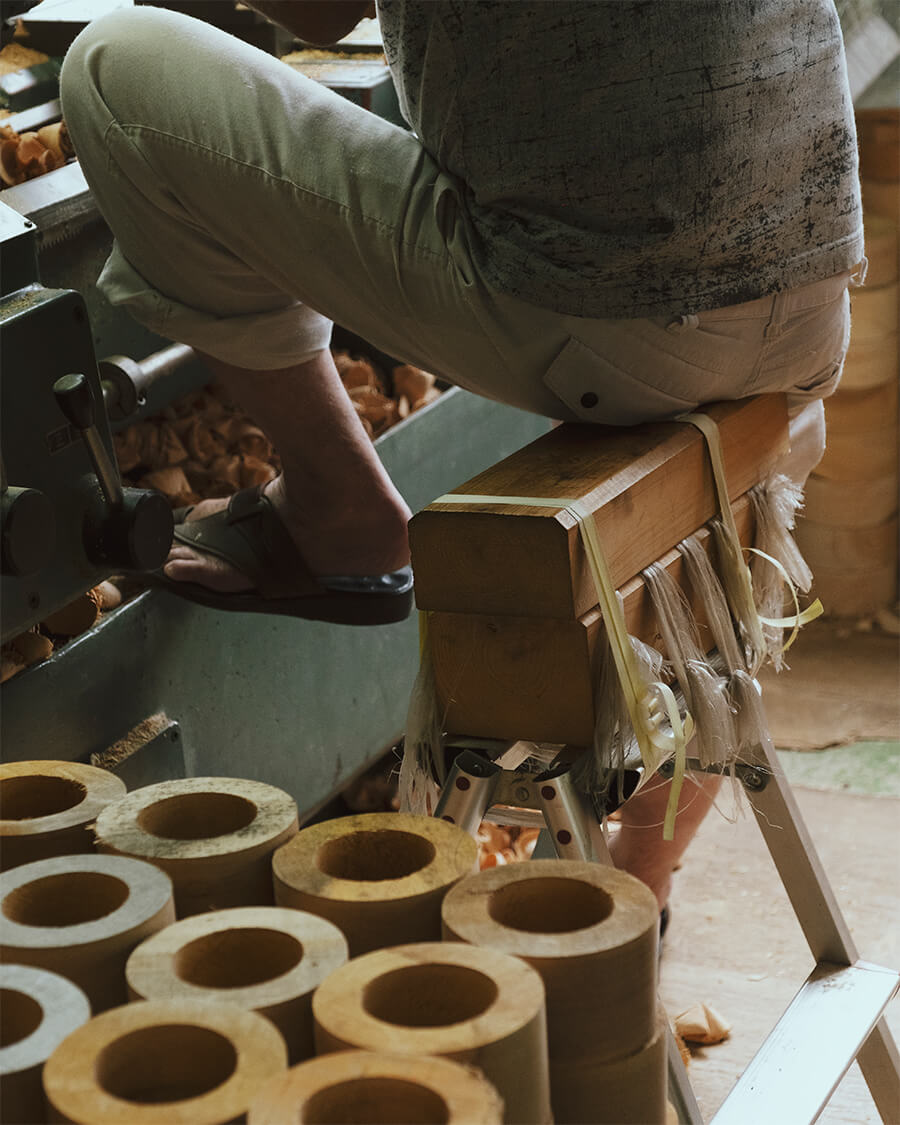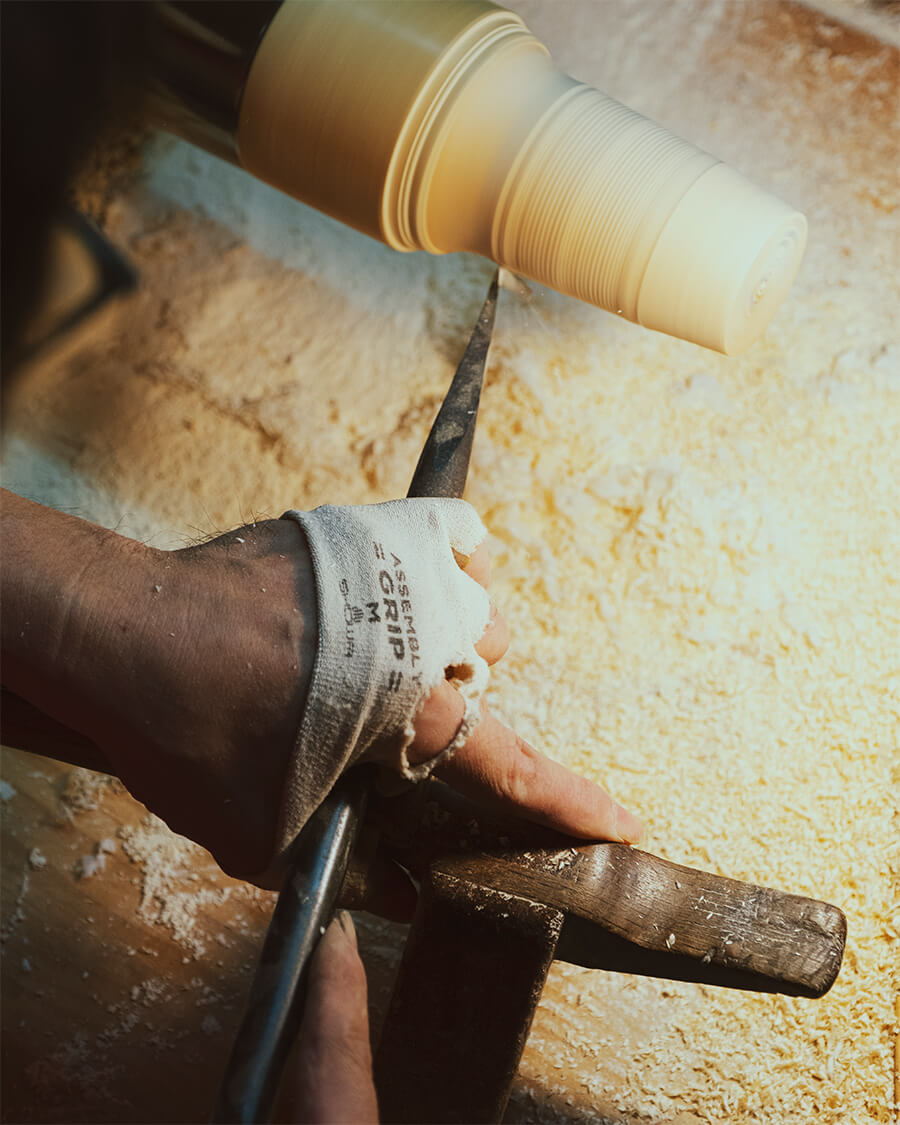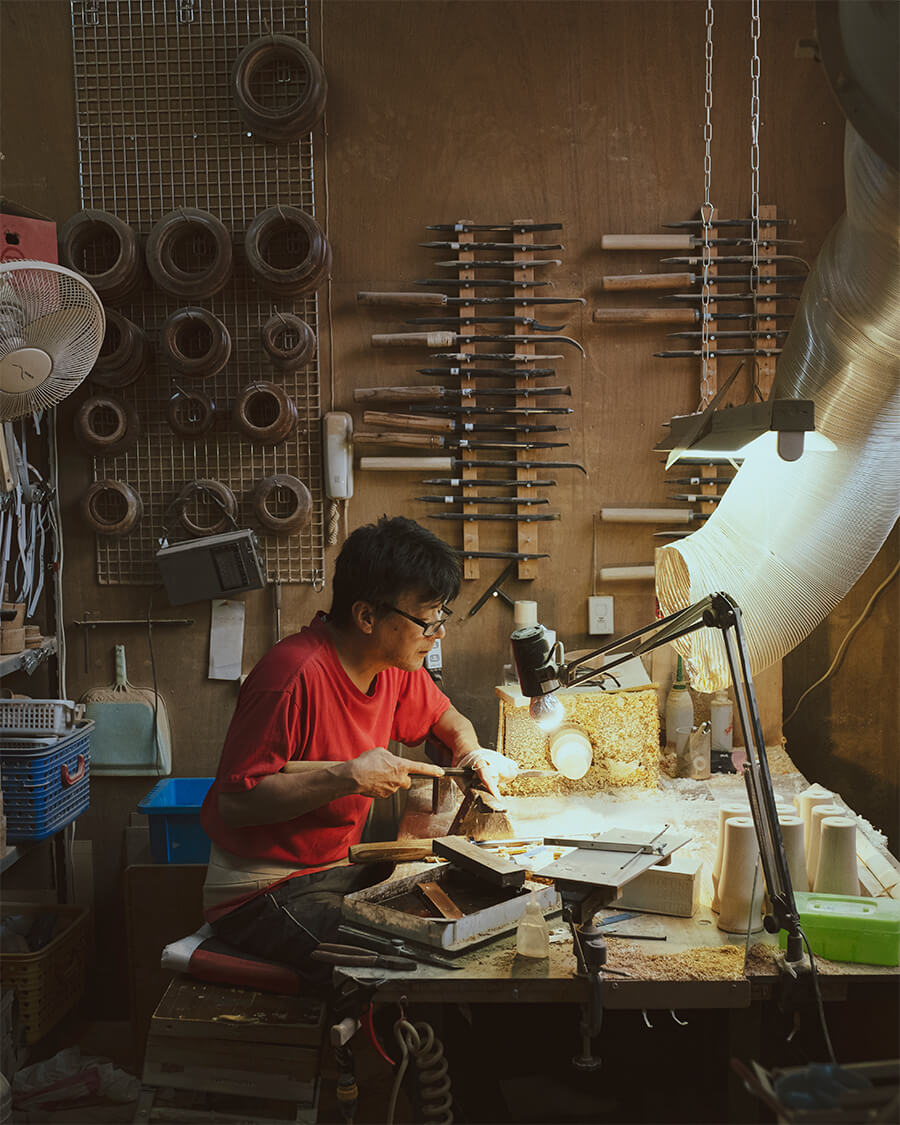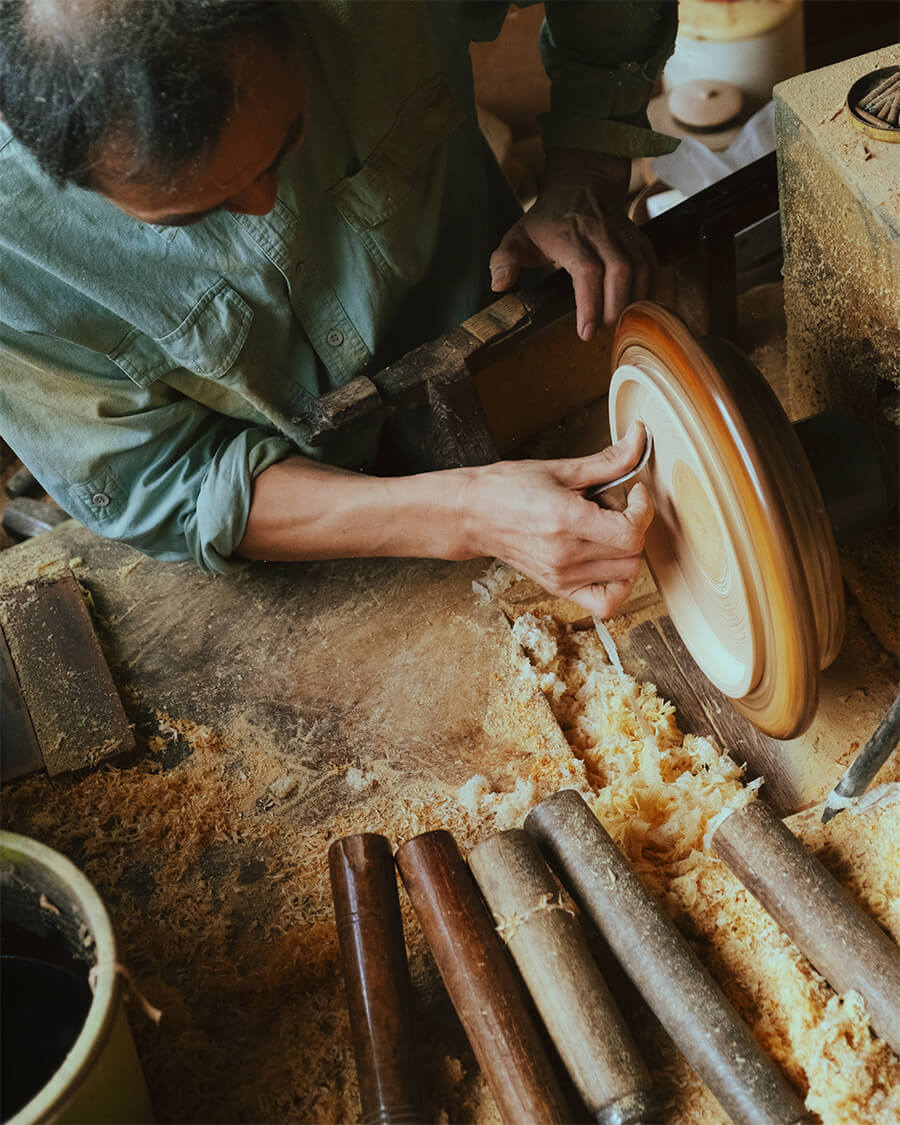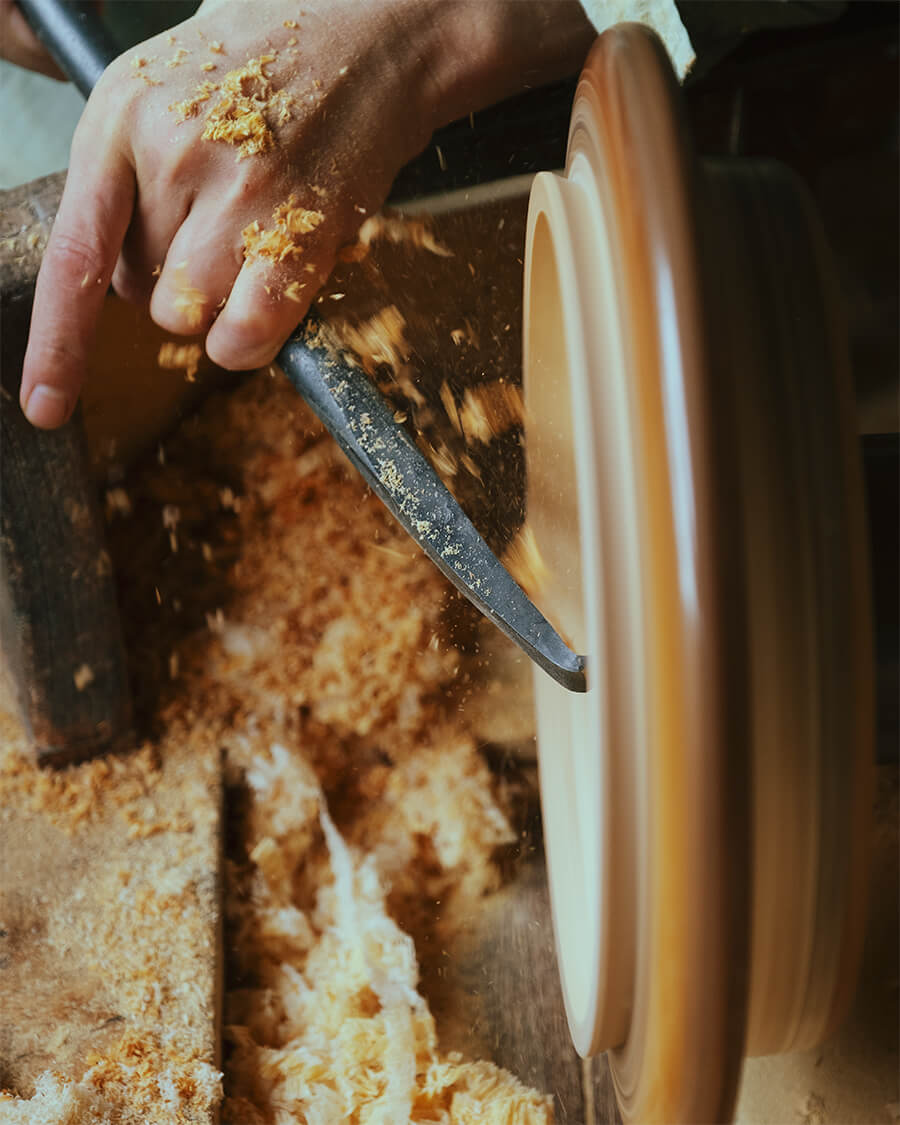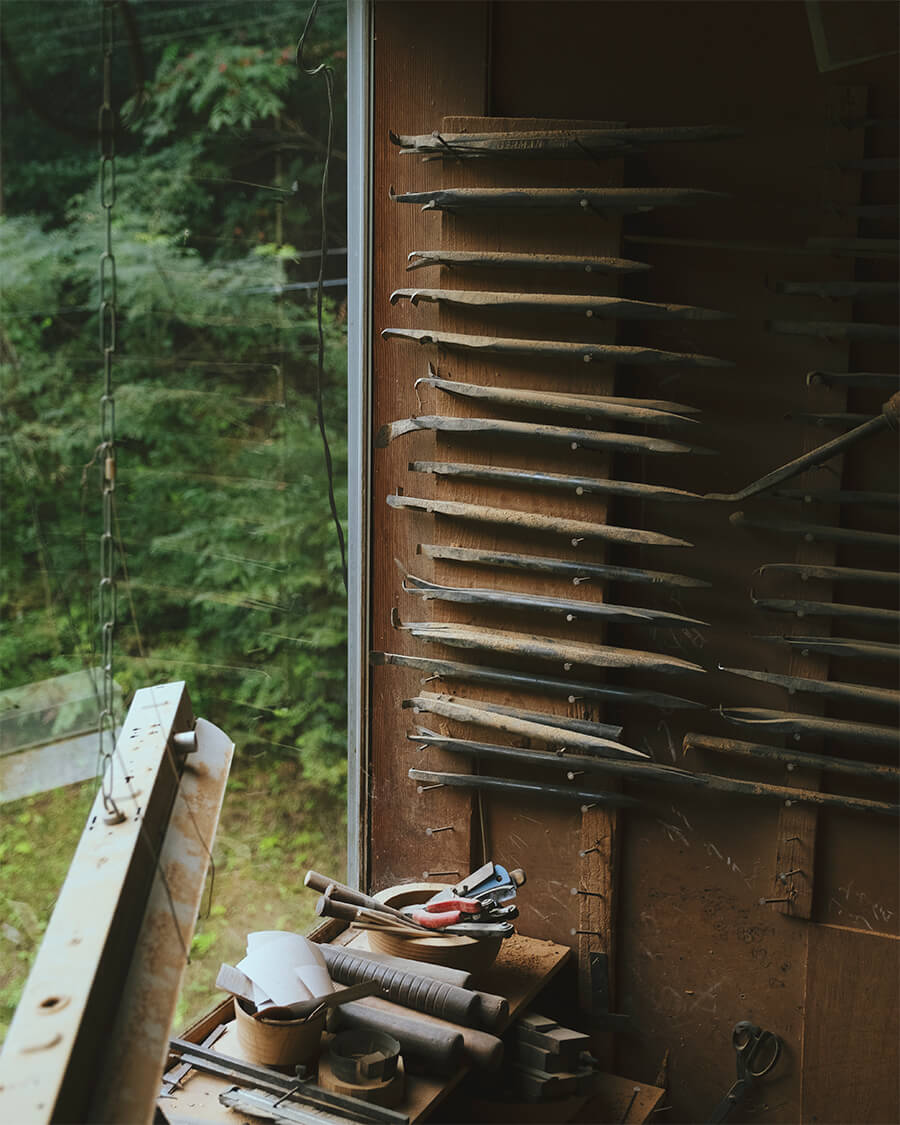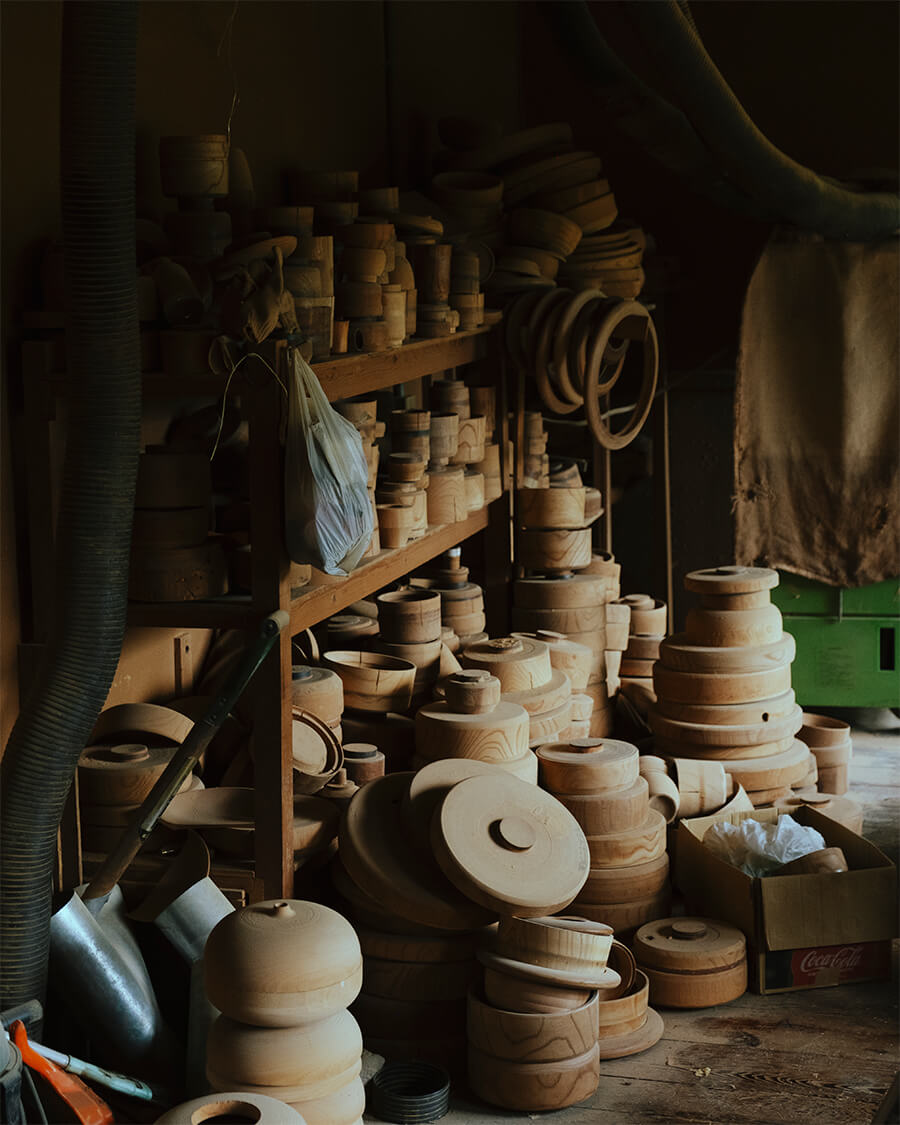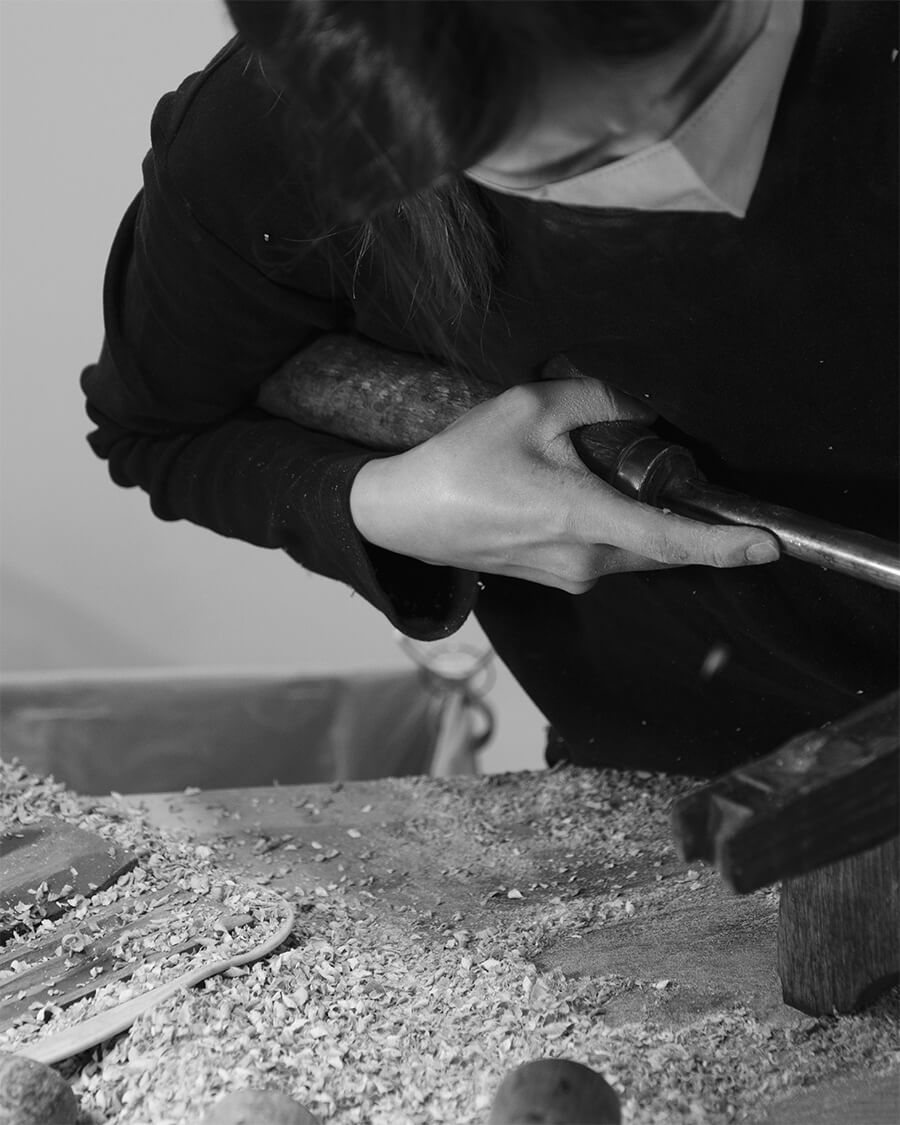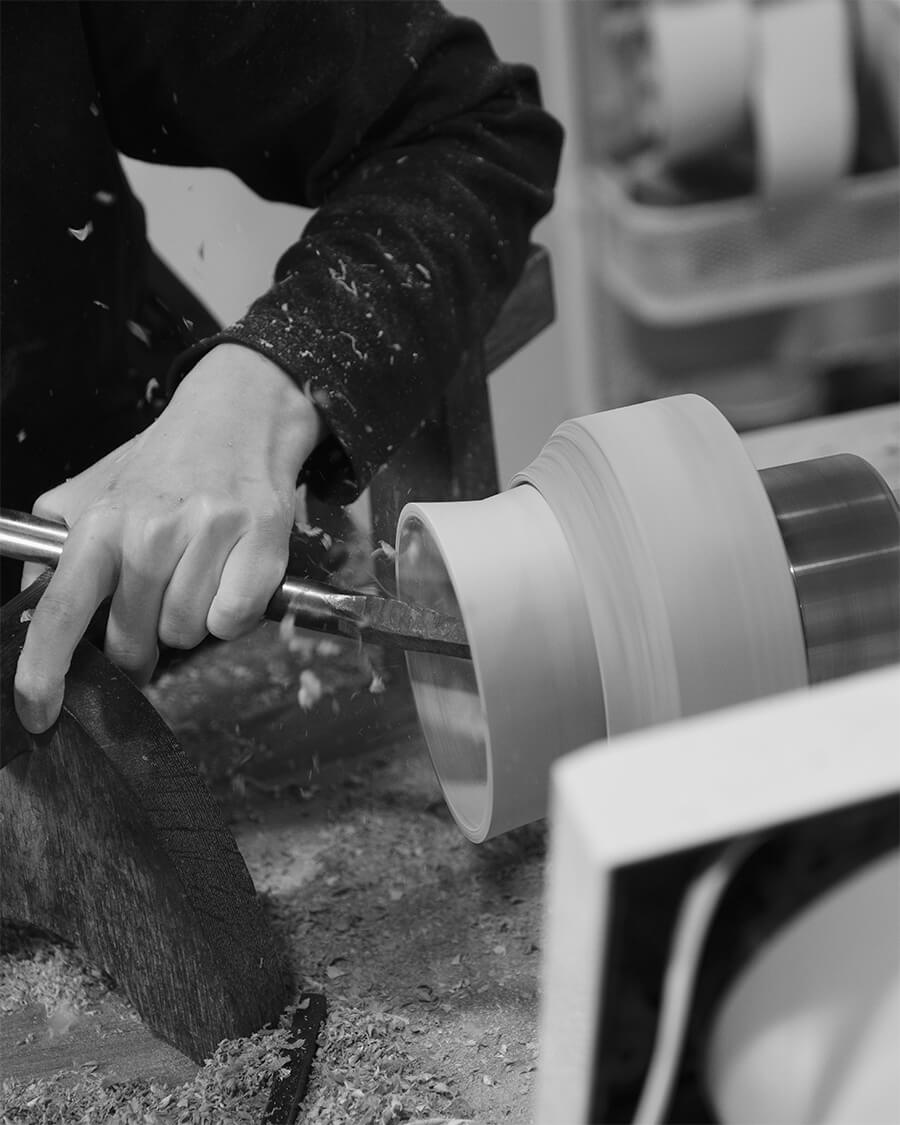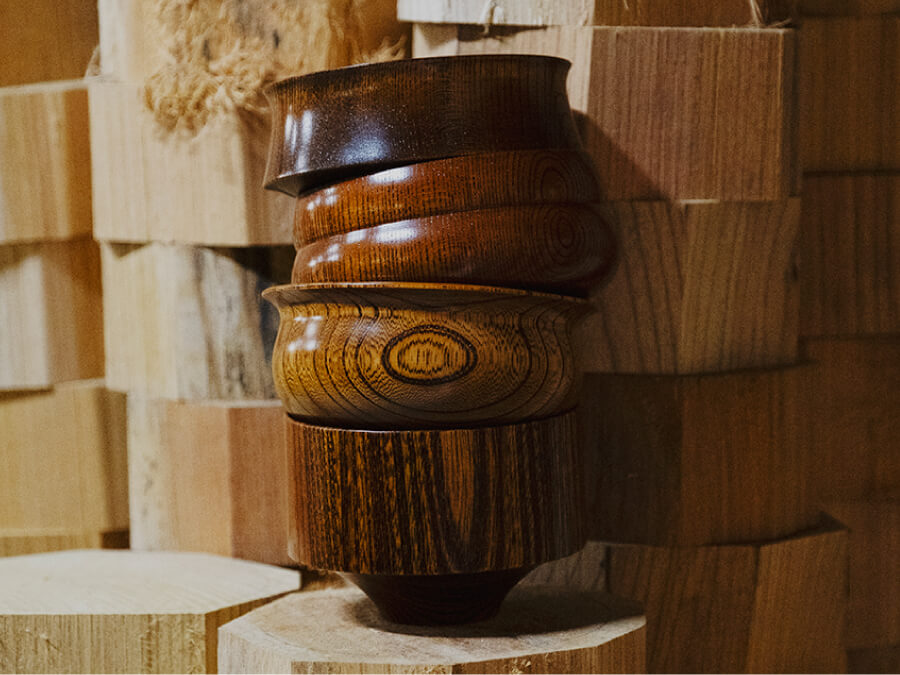
COVERCHORD FEATURE
GATO MIKIO SHOUTEN
JAPAN TRADITIONAL
CRAFTS WEEK 2023
We are delighted to showcase the woodturning craftsmanship of GATO MIKIO SHOUTEN
As part of this year’s JTCW event
Friday, November 10 - Thursday, November 23
Japan Traditional Crafts Week 2023 (JTCW) is an annual two-week event that introduces traditional crafts from various regions of Japan. The event takes place across 29 lifestyle stores in Tokyo, which take part by introducing a craft that is not part of their usual lineup.
As a first-time participant in JTCW, COVERCHORD introduces the exquisite craftsmanship of GATO MIKIO SHOUTEN, which produces Yamanaka Lacquerware from the Yamanaka Onsen area in Kanazawa, Ishikawa Prefecture.
With a legacy spanning four generations, GATO MIKIO SHOUTEN upholds traditional techniques while infusing a modern interpretation into their work, resulting in sophisticated lacquerware that defies the traditional image of this craft.
We decided to embark on a journey to the Yamanaka Onsen area to gain insight into the process behind these products. There, we uncovered a profound respect for tradition, an unwavering commitment to its preservation, and a dedication to adapting to the demands of the modern era.
In this article, we aim to delve into the essence of GATO MIKIO SHOUTEN’s craft, alongside their stunning products.
The traditional craft of Yamanaka Lacquerware
GATO MIKIO SHOUTEN

Yamanaka Lacquerware, a traditional craft from the Yamanaka Onsen area in Kanazawa has a history dating back approximately 400 years.
It began when a collective of woodworking artisans known as kijishi, relocated to this naturally abundant valley town, which was known to be cherished by the renowned poet, Matsuo Bashō.
Initially, wooden utensils made using a lathe were crafted as souvenirs for visitors to the hot springs. Over time, techniques like lacquer painting were introduced, and advancements in lathe turning led to the unique traditional culture of Yamanaka Lacquerware.
Among various lacquerware-producing regions, the Yamanaka Onsen area boasts the highest national production of wooden lathe-turned items, with numerous woodworking artisans actively contributing to the craft to this day.
The distinctive feature of Yamanaka Lacquerware is its natural appearance, highlighting the beautiful wood grain patterns. It is created through a technique where the shape of the utensil follows the direction in which the wood grows. The artisans' skillful lathe work techniques, such as usubiki, which results in an extremely thin finish allowing light to pass through, and kazari-biki, which carves delicate patterns on the wooden surface, are considered the best in Japan.
COVERCHORD visited the workshop of a renowned producer of Yamanaka Lacquerware called GATO MIKIO SHOUTEN. Established in 1908, it began as a woodworking shop specializing in wood processing and shaping. After several generations of family management, they adopted the current brand name as the fourth-generation owners. Today, they maintain strong trust-based relationships with artisans and handle everything from collaborating with designers to planning, producing, and selling lacquerware products.
JAPAN TRADITIONAL CRAFTS WEEK 2023
GATO MIKIO SHOUTEN
at COVERCHORD Nakameguro
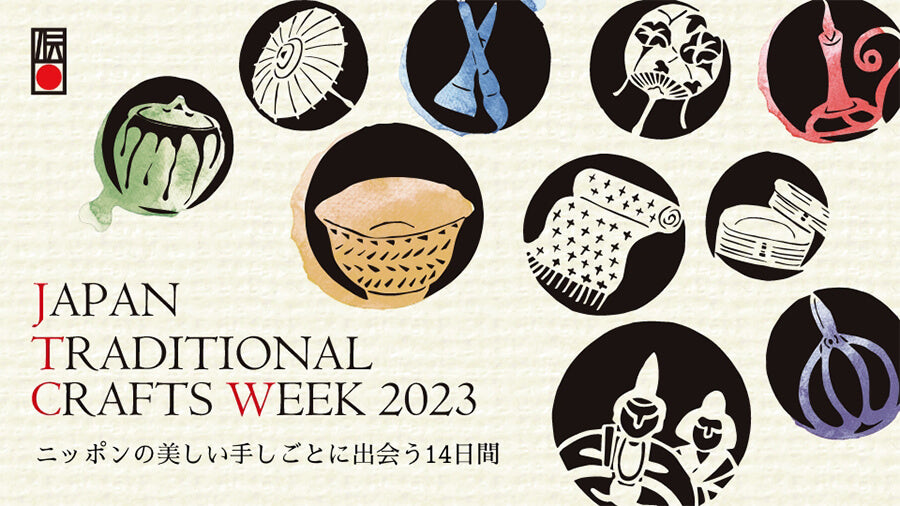
Japan Traditional Crafts Week 2023 is an event that aims to connect the “creators” with "sellers," and "users."
We are proud to exhibit the works of GATO MIKIO SHOUTEN at our Nakameguro store from Friday, November 10th to Thursday, November 23rd.
Selected products will also be available on our site, released the same day.
Friday, November 10th to Thursday, November 23rd
11:00 - 19:00
COVERCHORD Nakameguro
1-23-14 Aobadai, Meguro, Tokyo 153-0042
COVERCHORD Nakameguro
Instagram_@coverchord_nakameguro
GATO MIKIO SHOUTEN
Website_gatomikio.jp
Instagram_@gatomikio_shouten
JAPAN TRADITIONAL CRAFTS WEEK 2023
Website_jtcw.jp
Instagram_@jtcw_official
Friday, November 10 - Thursday, November 23
GATO MIKIO SHOUTEN
Visiting the workshop
Production of Yamanaka Lacquerware involves artisans in various specialist roles, from woodworking to base-making and painting the lacquer.
There are around 40 workshops in Yamanaka that specialize in various fields. GATO MIKIO SHOUTEN designs the collections and commissions the production to the most suitable professionals in each field.
To provide insight into the actual process of crafting lacquerware, we visited the workshops with the guidance of Masayuki Gato, the fourth-generation head of GATO MIKIO SHOUTEN.
The process of slicing the trees into cross-sections in the tategi-dori method, which is fundamental for the production of lacquerware.
Measurements are determined, and excess parts are cut away. A rough shape is then crafted using a lathe. In this state, the piece is left to slowly dry for a period ranging from one month to half a year, during which it naturally takes on any necessary warping. From the procurement of the raw wood to the completion of a single vessel, the process takes approximately one year.
Yamanaka Lacquerware primarily follows the tategi-tori method, where wood is first cut horizontally into rounds before taking on its final form, but depending on the shape of the lacquerware, such as large plates or trays, the yokogi-tori technique is also adopted. Sliced wooden materials are roughly lathe-turned into the shape of the vessel.
Kashoku-biki is the technique used to decorate the surface of the wood with patterns such as parallel lines and spirals. It is a precise and accurate lathe-turning technique where all lines are cut to the same depth and width. There are said to be around 40 to 50 different types of line in kashoku-biki.
Yoichi Kuzumi is a kashoku-biki master, able to create fine and intricate patterns to items such as tea trays and dishes. He also crafts precision-demanding items like tea caddies and delicate wine glasses with thin stems.
Mr. Kuzumi's foot-operated lathe is a special version that rotates at maximum power with a single push of the pedal, a challenging feat that only skilled artisans can manage.

The solitary, focused act of woodturning in the workshop exudes the spirit of a true craftsman.
The plane used for woodturning is individually hand-forged from steel by the craftsmen. The workshop has a tranquil atmosphere, where the only sound is that of wood being turned.
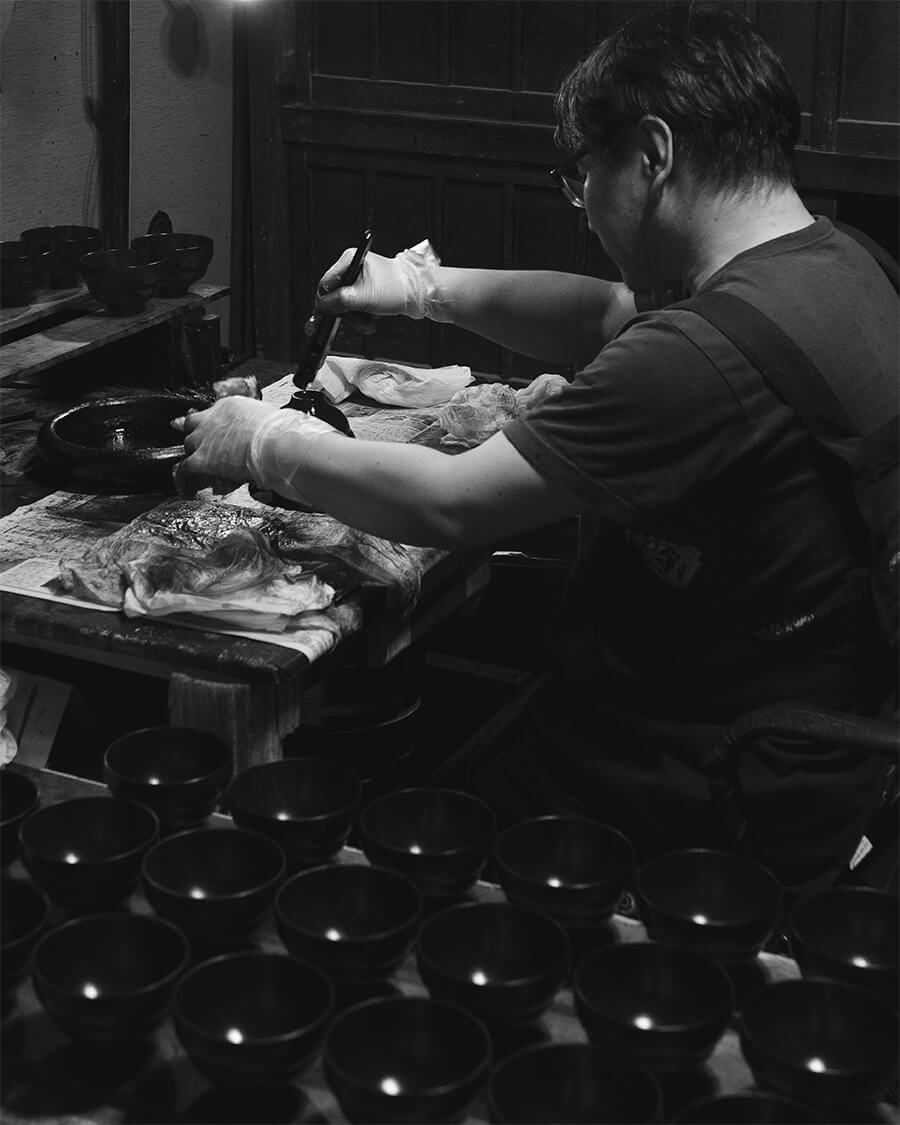
The technique known as fukurushi creates a transparent finish that accentuates the wood grain.
Careful attention is given to details such as avoiding any leftover lacquer or dust particles, and the process is repeated to achieve the desired effect.
The traditional fukurushi finish with a beautiful color contrast. When achieving a matte texture, a final layer of urethane coating is applied, creating pieces with a modern touch that are characteristic of GATO MIKIO SHOUTEN.
Yamanaka, nestled in a deep mountain valley with hot springs, is a place where you can feel how nature has shaped and influenced this traditional craft.
GATO MIKIO SHOUTEN
Continuing the legacy of woodworking
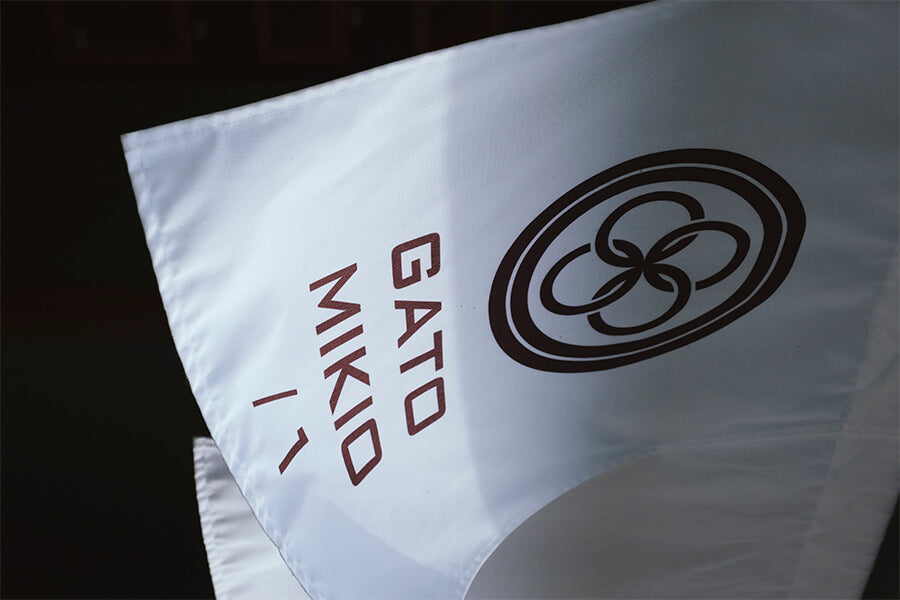
During our visit, it was clear to see the strong trust and connection between Masayuki Gato, the 4th-generation leader of GATO MIKIO SHOUTEN, and the skilled artisans.
Gato led the rebranding of GATO MIKIO SHOUTEN, employing designers to revamp the image and products of the craft, which led to winning numerous design awards.
But, the path to this point wasn't without its share of difficulties and adversity. After learning the know-how in a specialized school and working for a lacquerware wholesaler in Tokyo, he returned to Yamanaka to continue the family business. At that time, Japan was in the midst of a severe economic downturn following the bursting of the bubble economy. The mood in the lacquerware industry at the time was mostly centered around providing products at the lowest price possible.
Gato felt frustrated that the value of Yamanaka Lacquerware was not being recognized by the world. Through his extensive knowledge, he felt a sense of duty as a cultural bearer and the pride of a woodworker. These two things ignited his passion.
He realized that while preserving tradition was important, the essence of the craft lies in seeking newness and being in tune with current trends. He adopted the theme of one of Matsuo Bashō’s haiku principles, "Fueki Ryuko" (不易流行), which means "constancy in change," and polished the value of Yamanaka Lacquerware that would remain unchanged for the next ten years and beyond.
Today, Gato, who has become a leading figure in the next generation of Yamanaka Lacquerware, has created the “Gato Mikio Research Institute”, a place where the traditions and culture of the company and craft can be documented and preserved.
Passing down traditional crafts to future generations requires a huge amount of time and effort. While the decline of traditional craftsmanship cultures is a worry in different regions of Japan, Gato's approach could potentially offer valuable insights for tackling these challenges.

The “Gato Mikio Research Institute," where the next generation of young successors hone their skills day by day.

The flagship store, GATO MIKIO/1.




